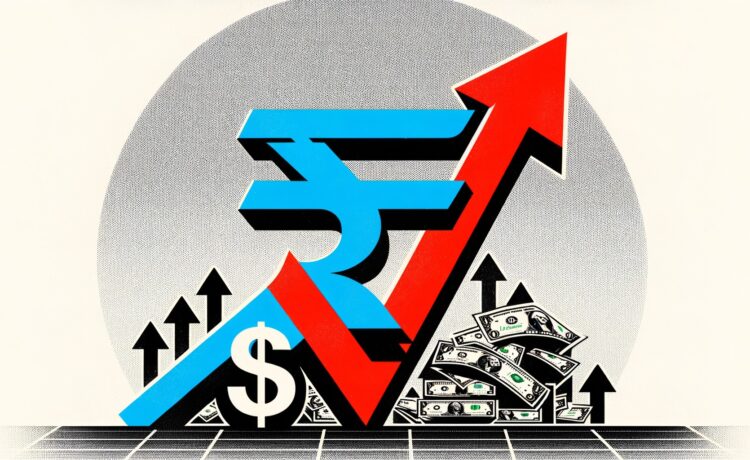What’s going on here?
The Indian rupee climbed to 83.87 against the US dollar, marking its highest point since August 6, supported by a rally in Asian currencies.
What does this mean?
The rupee’s movement up from its previous close of 83.94 reflects strong support from a rally in Asian currencies, which rose between 0.4% to 1.1%. Despite Monday’s gains, the rupee experienced choppy trading as importers bid for dollars and local equity outflows added pressure. So far in August, overseas investors have net sold $2.5 billion in Indian equities, highlighting ongoing challenges for the rupee. Meanwhile, the dollar index fell to 102, its weakest in over six months, amid speculation about a potential Federal Reserve rate cut on September 18.
Why should I care?
For markets: Global currency shifts in action.
The Indian rupee’s recent strength fits into a broader narrative of fluctuating global currencies. The weakening dollar is a pivotal factor, impacted by anticipation of a potential Federal Reserve rate cut. Market players are factoring in 95 basis points of rate cuts through 2024. Fed Chair Jerome Powell’s upcoming remarks and the latest Fed minutes will be key in guiding market expectations and could influence further movements in the rupee-dollar dynamics.
The bigger picture: Economic undercurrents revealed.
The rupee’s performance highlights deeper economic currents, including the delicate balance between local equity flows and international investor sentiment. The Reserve Bank of India’s expected stance on keeping policy rates unchanged contrasts with anticipated US rate cuts, reflecting different economic strategies. A dovish tone from Fed officials could increase dollar-rupee forward premiums, adding another layer of complexity to the global economic outlook.
















